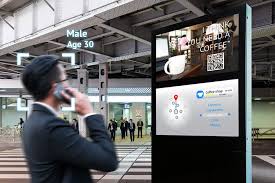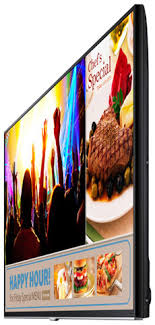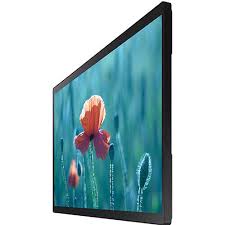
Exploring the Impact and Benefits of Smart Commercial Displays in Modern Business
In the rapidly evolving world of business technology, smart commercial displays have emerged as a game-changer, revolutionizing how businesses interact with customers, deliver content, and enhance brand engagement. These digital solutions go far beyond traditional static signage, offering dynamic, interactive, and real-time features that make them an invaluable tool for retail, hospitality, corporate offices, and many other sectors.
The growing reliance on smart commercial displays reflects their effectiveness in not only boosting customer experience but also optimizing operational efficiency. In this article, we will delve into the key benefits, applications, and technologies behind these advanced digital displays, demonstrating their significance in today’s competitive business environment.

What Are Smart Commercial Displays?
Smart commercial displays are advanced digital signage solutions equipped with a range of interactive and customizable features. These displays typically include built-in media players, internet connectivity, and touch capabilities, enabling businesses to create engaging content that can be updated remotely. Whether used for advertising, informational purposes, or customer engagement, smart commercial displays are transforming the way businesses communicate with their audiences.
Unlike traditional digital signage, smart commercial displays provide flexibility and ease of use, allowing for content scheduling, real-time updates, and even interactive experiences. These displays are found in various forms, including digital billboards, interactive kiosks, menu boards, and video walls, all designed to capture attention and convey messages effectively.

Key Features of Smart Commercial Displays
- Interactive Touchscreens: Many smart commercial displays offer touchscreen capabilities, allowing customers to interact directly with the content, making them ideal for use in retail and self-service environments.
- Remote Content Management: Businesses can update and schedule content on smart commercial displays from anywhere, offering greater flexibility in content delivery.
- Real-Time Integration: These displays can integrate with various data sources, such as social media feeds, news updates, and live metrics, providing real-time information to customers and staff.
- High-Quality Display: Most smart commercial displays feature high-definition or 4K resolution, ensuring clear, crisp visuals that grab attention and effectively convey messages.
- Built-in Connectivity: Wi-Fi, Ethernet, and Bluetooth options make it easy to integrate smart commercial displays into existing business networks and systems.
Why Are Smart Commercial Displays Crucial for Business Success?
The increasing adoption of smart commercial displays across various industries is a direct response to the growing need for dynamic and impactful communication tools. Here are some key reasons why businesses are choosing smart commercial displays:
1. Enhanced Customer Engagement
With smart commercial displays, businesses can offer more interactive and personalized experiences. For example, touch-screen kiosks allow customers to browse products, check prices, or access information without the need for direct interaction with staff. This enhances the customer experience by providing faster service and reducing wait times.
2. Increased Brand Visibility and Awareness
Smart commercial displays allow businesses to showcase promotional content, advertisements, and branding materials in highly visible areas. Digital screens are more eye-catching than static posters or signs, and businesses can update the content regularly to keep it fresh and relevant.
3. Cost-Effective Marketing Solution
Traditional print advertising and signage often require substantial upfront costs and ongoing expenses for updates. In contrast, smart commercial displays offer a cost-effective alternative by allowing businesses to update content remotely without the need for physical materials. This reduces operational costs while offering greater flexibility in marketing campaigns.
4. Improved Operational Efficiency
By using smart commercial displays for internal communication, businesses can streamline their operations. For example, displays in employee areas can be used to share important information, track performance metrics, or display real-time updates on company operations. This helps businesses stay organized and keeps staff informed.

5. Interactive and Data-Driven Marketing
Businesses can leverage smart commercial displays to create interactive marketing campaigns. For instance, digital screens in retail stores can display personalized promotions based on customer behavior or loyalty programs, enhancing customer engagement and driving sales.
Applications of Smart Commercial Displays Across Industries
Smart commercial displays are versatile and can be used across a wide range of industries and business environments. Below are some of the key sectors benefiting from the adoption of smart commercial displays:
1. Retail
In the retail industry, smart commercial displays are being used to enhance the shopping experience. Digital signage can be employed for product promotions, price displays, and in-store navigation. Interactive kiosks and touchscreens allow customers to explore product catalogs and receive personalized recommendations based on their preferences.
2. Hospitality
Hotels, restaurants, and resorts use smart commercial displays to provide guests with information about services, room availability, dining options, and entertainment schedules. In restaurants, digital menu boards enable quick updates, display nutritional information, and promote special offers.
3. Corporate Offices

In the corporate sector, smart commercial displays are used for internal communication, including displaying company news, announcements, and performance data. Digital screens in meeting rooms or lobbies can be used for scheduling, conference presentations, and visitor management.
4. Transportation
Airports, train stations, and bus terminals use smart commercial displays to display real-time flight information, arrival and departure schedules, and directions. Digital signage also helps keep passengers informed and improves the overall travel experience.
5. Education
Educational institutions are increasingly adopting smart commercial displays for interactive learning and information dissemination. These displays are used in classrooms, lecture halls, and hallways to showcase educational content, promote campus events, and communicate with students and staff.
Table 1: Key Benefits of Smart Commercial Displays
| Benefit | Description |
|---|---|
| Enhanced Customer Interaction | Touchscreen capabilities allow customers to engage with content directly. |
| Real-Time Updates | Content can be updated instantly to reflect new information. |
| Cost-Effective | Reduces the need for physical signage and print materials. |
| Increased Brand Visibility | Dynamic displays attract more attention than traditional signage. |
| Data-Driven Marketing | Displays can integrate with customer behavior data for personalized campaigns. |
Technological Trends in Smart Commercial Displays
The technology behind smart commercial displays continues to evolve, offering businesses even more capabilities to engage with customers and streamline their operations. Some of the most prominent technological trends in smart commercial displays include:
1. AI and Machine Learning Integration
AI-powered smart commercial displays can analyze customer interactions, preferences, and behavior patterns to deliver personalized content. Machine learning algorithms enable displays to adjust the content based on factors like time of day, audience demographics, and real-time environmental conditions.
2. 4K and Ultra-HD Resolution
As content quality becomes increasingly important, many businesses are adopting smart commercial displays with 4K or ultra-HD resolution to ensure that visuals are sharp, vibrant, and captivating. This is particularly important for applications like retail advertising, where the display quality can significantly impact customer engagement.
3. Cloud-Based Content Management
Cloud-based software solutions are becoming more popular for managing smart commercial displays. This allows businesses to remotely control and update content across multiple locations, ensuring consistency and efficiency. It also enables businesses to schedule content in advance, saving time and reducing the risk of errors.
4. Integration with IoT Devices
The integration of smart commercial displays with the Internet of Things (IoT) is also a growing trend. IoT connectivity allows displays to respond to real-time data from sensors, cameras, and other devices. For example, a display in a retail store could change its content based on foot traffic data or customer interactions.
Table 2: Industry-Specific Applications of Smart Commercial Displays
| Industry | Application |
|---|---|
| Retail | Digital signage for promotions, product displays, and customer engagement. |
| Hospitality | Interactive kiosks, digital menu boards, and guest information displays. |
| Corporate | Digital signage for internal communications and meeting room displays. |
| Transportation | Real-time flight/train/bus schedules, directions, and notifications. |
| Education | Interactive learning tools, campus information, and event promotion. |
As technology continues to advance, smart commercial displays will become even more integrated into everyday business operations. With the ability to provide real-time updates, interactive content, and data-driven marketing solutions, smart commercial displays are set to redefine the way businesses communicate with their customers and employees.

Whether you’re looking to improve customer engagement, increase operational efficiency, or enhance brand visibility, adopting smart commercial displays can provide significant benefits for your business. By staying ahead of the curve with the latest display technologies, businesses can ensure that they remain competitive in an increasingly digital world.
In summary, smart commercial displays are not just a trend but an essential tool in today’s fast-paced business environment. Their ability to adapt to new technologies and meet the growing demands of customers ensures that they will continue to be a critical component in the success of modern businesses.
